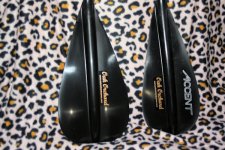- Joined
- Nov 22, 2021
- Messages
- 376
- Reaction score
- 557
I recently purchased a book on paddle making.
There is a lot in it on paddle history and design.
One thing it talks about is stroke rate and blade size.
Supposedly, the voyageurs, when paddling long distances, preferred a smaller blade area and fast stroke rate.
Long day, small blade. Short day, big blade.
Of course, a strong, fit person can use larger blade than a weaker, unfit person.
Ego comes into play here. Who wants to admit they need a smaller blade?
I'm trying to not let my ego dictate my blade size, so I've been looking for paddles with smaller blade areas. I'm not as strong as I was when I was younger.
I'm even thinking of modifying a paddle by removing area.
I believe I read that some marathon racers use a smaller blade and faster stroke rate. It is less tiring over a long distance.
Thoughts?
There is a lot in it on paddle history and design.
One thing it talks about is stroke rate and blade size.
Supposedly, the voyageurs, when paddling long distances, preferred a smaller blade area and fast stroke rate.
Long day, small blade. Short day, big blade.
Of course, a strong, fit person can use larger blade than a weaker, unfit person.
Ego comes into play here. Who wants to admit they need a smaller blade?
I'm trying to not let my ego dictate my blade size, so I've been looking for paddles with smaller blade areas. I'm not as strong as I was when I was younger.
I'm even thinking of modifying a paddle by removing area.
I believe I read that some marathon racers use a smaller blade and faster stroke rate. It is less tiring over a long distance.
Thoughts?

